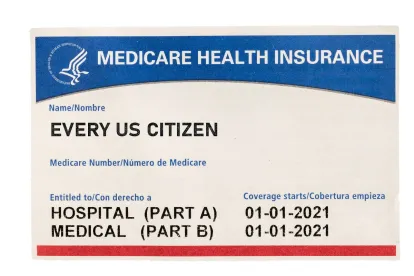On November 2, 2021, the Centers for Medicare and Medicaid Services (“CMS”) announced that it will be taking actions to advance its strategic commitment to drive innovation to support health equity and high quality, person centered care. CMS’ 2022 Physician Fee Schedule final rule (the “Final Rule”), will focus on, amongst other things:
-
promoting greater use of telehealth and other telecommunication technologies to provide behavioral healthcare services;
-
encouraging growth in the diabetes prevention program; and
-
boosting payment rates for vaccine administration.
CMS’ aim at promoting healthcare equity and access to care, falls in line with its July 13, 2021 announcement, which we discussed in our July 27, 2021 blog post titled “CMS’ Proposal to Expand Telehealth Coverage”. In that blog post we discussed CMS’ proposed extension of telehealth services and the use of audio-only visits in order to promote equal access to healthcare services. Now, as of the November 2nd announcement, the Final Rule would memorialize its commitment to health equity and advance programs that will improve the quality of care for people with Medicare by incentivizing clinicians to deliver improved outcomes. CMS’ Administrator, Chiquita Brooks-LaSure, noted that “The [2022] Physician Fee Schedule final rule advances all these strategic priorities and helps build a better Medicare program for the future.”
One of the priorities of the Final Rule, is to increase access to behavioral health care services by expanding access to underserved populations through the use of telehealth. Consistent with last years trends, CMS will eliminate geographic barriers by allowing patients to use telehealth services to access diagnosis, evaluation, and treatment services from their homes. In order to ensure access, CMS is allowing the use of audio-only telephone calls as a method of treatment and diagnosis, “this means counseling and therapy services, including treatment of substance use disorders and services provided through Opioid Treatment Programs, will be more readily available to individuals, especially in areas with poor broadband infrastructure” CMS mentioned in its November 2nd press release.
Another priority of the Final Rule is to improve its Medicare Diabetes Prevention Program (“MDPP”) by eliminating the program enrollment fee and restructuring payments so that suppliers of the MDPP programs receive larger payments for participants who reach milestones in attendance. CMS hopes that these changes, along with coach led MDPP sessions, will increase access to the MDPP services for people with Medicare in rural areas, and effectively decrease the number of individuals with diabetes in both urban and rural areas.
An additional priority of the Final Rule, and in line with the Biden Administrations’ aim at increasing the number of vaccinated individuals, CMS will continue to maintain the payment rate of $40 per dose for the administration of the COVID-19 vaccine through the calendar year. Following the calendar year, and effective January 1, the payment rate for COVID-19 vaccine administration will be set at a rate to align with the payment rate for the administration of other Part B preventive vaccines. CMS hopes that this change, among others, will increase access to potentially life saving vaccines.
Lastly, under the Final Rule and beginning January 1, 2022, CMS will authorize Medicare to make direct payments to Physician Assistants for services furnished under Part B. The result, more individuals with Medicare will have access to these services as physician assistants will have the same opportunities to bill Medicare for professional services as certain other Medicare practitioners already do.
The Final Rule focuses on health equity, by extending the COVID-19 flexibilities, increasing access to healthcare services through the use of telehealth services, and enhancing payments for treatment through 2022. As CMS continues to promote access to healthcare, it will need the support of legislators to establish more formal rules which support the expansion and use of telehealth services and promote access to care. Our “State of Telehealth” series continues to monitor the expansion of telehealth legislation across the country and will keep a close eye on how the Final Rule affects state legislators.




 />i
/>i

